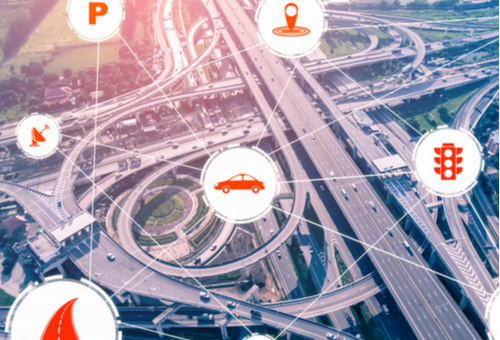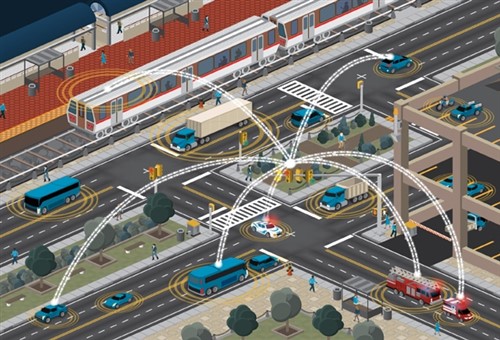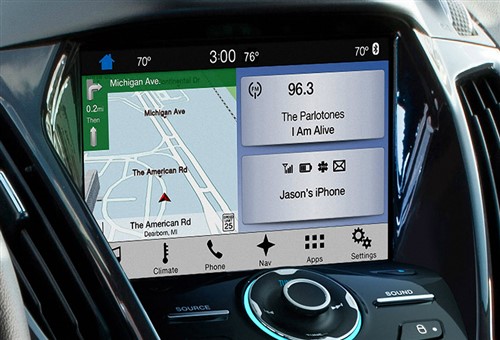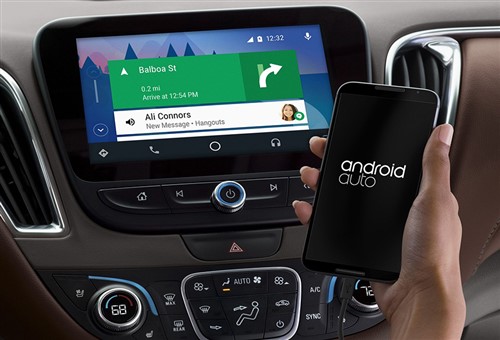
It has long been known that many people, and particularly men, view their cars as extensions of their personalities, as this study shows- or confirms with this key finding- “People who perceive their car as a reflection of their self-identity are more likely to behave aggressively on the road and break the law.” It has also long been known that many people of both genders and all ages buy smartphones with capabilities and features their owners never use, or knew existed. So what do these two facts mean in practice?
It means this; most car manufacturers are now marrying ADAS systems and smartphone technology, in the sense that they are developing communications systems that use existing smartphone technologies and protocols to effectively turn cars into rolling smartphones. In fact, many new vehicles of all classes can now be described as smartphone extensions, and in this article, we will take a closer look at what this level of connectivity will mean for the average car owner. Let us start with this question-
In some ways, the future has already arrived, since there are already vehicles on the road that use cell phone connectivity to create, access, and consume information, one example of this being Audi’s proprietary “PRIME”* technology. Although the technology is still under development**, equipped Audi (and some models of other brands) can already share various types of information with drivers, passengers, road infrastructure, some law enforcement agencies, insurance companies, but more importantly, with drivers of other connected vehicles.
*This technology is already in use in Las Vegas in the USA, which is the first location within the USA that AUDI has chosen in which to combine advanced connectivity technology with road and traffic management infrastructure.
** Note that testing of this technology is currently underway at several sites and locations in both Australia and New Zealand.
However, these types of communication require a high level of standardisation, which is why the SAE (Society of Automotive Engineers) has developed a set of guidelines that car manufacturers in the US market are obliged to observe during the development of connected vehicles. For the purposes of the guidelines, a “connected vehicle” is defined as “...a vehicle that is equipped with technologies and services that transmit and receive data via a wireless Internet connection”. As a matter of interest, the National Highway Traffic Safety Administration (NHTSA), which is the final arbiter of all things related to vehicle and road safety in the US market, formally adopted and published the SAE definition of vehicle connectivity as long ago as 2016.
Nonetheless, before we get to some specifics of vehicle connectivity, let us look at the various levels of connectivity, which is based on the principle of “Who Does What, When”-
This set of guidelines might appear to refer only to automated driving systems that depend on an array of cameras, microphones, radar/lidar transponders, and other devices to keep a vehicle centred in a driving lane while in self-driving mode. However, car manufacturers are using the devices that underpin SAE levels 4 & 5 possible as "anchoring" points for advanced smartphone communications protocols.
There are many examples of how this is done, but let us look at two that will have the most practical advantages for drivers that have long commutes in heavy traffic-
Traffic lights

While many vehicles with adaptive cruise control can detect traffic lights and even activate the brakes autonomously if the system detects that the driver is not taking action to slow the vehicle down, advanced vehicle connectivity takes this ability several steps further. For instance, if the traffic light is connected, in the sense that it is connected to a wider road traffic management infrastructure, the traffic light will display the number of seconds remaining until it changes on the connected vehicle’s infotainment screen.
For example, if a driver is approaching a traffic light on green, the infotainment system will display a count-down of the number of seconds remaining until the light changes to amber, which should (in theory) discourage some drivers from accelerating sharply to make it across the intersection before the light changes.
Moreover, if a series of traffic lights on a busy stretch of road are all connected, a microprocessor in a node that controls the traffic lights will transmit a recommended speed to all connected vehicles, which speed will be displayed on the infotainment screens of all connected vehicles. Thus, driving at this recommended speed will allow all vehicles in the stream of traffic to catch all connected traffic lights on green, which will greatly improve the flow of traffic through busy intersections.
Traffic flow regulation
We all know how frustrating it can be when the flow of traffic on a busy highway suddenly slows to a crawl, just when we are in a hurry to get somewhere. Thus, to reduce, or mitigate traffic jams, advanced connectivity systems will use automated “traffic counters” that will in their turn, use advanced statistical algorithms to detect changes in the way traffic flows.
In practice though, the effectiveness of such systems depends on the number of connected vehicles that are within range of a particular traffic counter. While all traffic counters are connected both to each other and to all connected vehicles within their respective ranges, the connected vehicles that are closest to an obstruction, such as a traffic accident, are the worst affected.
Therefore, connected vehicles that are furthest away from the obstruction to traffic flow can be informed that an obstruction is present before they are caught up in the traffic jam. As a practical matter, the road infrastructure management system will then either advise connected vehicles to reduce speed or redirect connected vehicles to alternative routes* to avoid the obstruction to ease traffic congestion around the obstruction. This feature will be particularly useful in cases where incidents that affect the flow of traffic occur out of a drivers' line of sight, such as, for instance, on the other side of a hill or around a bend in the road.
* Car manufacturers are designing connectivity/navigation systems for both Android and Apple smartphones. In the case of Apple phones, the phone will display Apple Maps, and in the case of Android phones, the default map display will be Google Maps, both of which are considered superior to the navigation systems that are currently programmed into new cars.
Limited space precludes the discussion of more examples, but in combination with existing ADAS technologies, the above examples will arguably be the biggest contributors to road safety in general, and the reduction of road accidents, in particular. Moreover, reduced travelling times will reduce both driver fatigue and exhaust emissions, and as a particular bonus, reduced stress while driving may even reduce the incidence and prevalence of road rage, which brings to the question of-
As stated elsewhere, some manufacturers will base their systems on Apple phones, while others will base theirs on Android systems. However, neither system will be hard-wired or programmed into any of the vehicles’ communications systems, so to make the system work, the phone needs to be connected to the vehicle either with a USB cable or via a Bluetooth or WIFI connection to display the smart phone’s screen on the vehicle’s infotainment screen. Also, since this level of connectivity is energy-intensive, the smartphone needs to be connected to a suitable power supply in the vehicle to maintain battery power when streaming music or using the enhanced navigation system.
As a practical matter, though, vehicle connectivity systems are legally required to only use the functions on a smartphone that can be related to traffic flow management. As a result, a driver will not be able to play games or engage in any other activity on the connected phone that could distract him or her from operating a vehicle safely. Moreover, and as a legal requirement for all systems currently under development in the USA (and elsewhere), all vehicle connectivity systems can only be operated by existing infotainment controls on the steering wheel and centre console to reduce the number of possible distractions a driver has to deal with in heavy traffic, which brings us to the vehicle connectivity systems in current use. Let us start with-

Image source: Apple
This image shows the display on an infotainment system that is powered by an iPhone. Note that while the display resembles the iOS interface, it is greatly simplified to reduce the number of possible distractions.
In this instance, incoming WhatsApp and/or iMessages are automatically spoken by a computer-generated voice, which prevents the driver from having to look at the screen to read the message. From a safety perspective, the overall design of the vehicle/phone integration is focussed on preventing the driver from having to look at the screen, which is why only controls that are already installed to manage the infotainment system are allowed; no additional controls, buttons, or switches may be installed, however convenient they may appear to be.
As of now, more than 300 vehicle models are either already equipped with CarPlay functionality, or are capable of supporting the system. However, while Honda and some other manufacturers incorporate CarPlay into an enhanced audio system on some models at no (discernible additional cost), Ford will install CarPlay to work with their Sync 3 system upon request and a $1000 US dollar addition to the vehicle’s price tag. On the other end of the scale, Ferrari will also install CarPlay on any model upon request for a modest fee of $3000 US dollars, because if a customer can afford a Ferrari, then an additional few thousand dollars on the price tag should not matter much.

Image source: Google
Unlike CarPlay-based systems that display a simplified iOS operating system interface, Google's Android-based connectivity system displays the vehicle's infotainment screen, but with added functions to accommodate the making and receiving of hands-free phone calls via Bluetooth, using Google Maps for navigation, or playing or streaming music via a USB connection with no loss of sound quality. However, like Apples' CarPlay system, the Android Auto system also does not allow a driver to access games or other equally distracting activities.
However, unlike CarPlay, an Android smartphone can be used as the primary display, instead of routing the display through the infotainment screen. On some vehicles though, particularly those that do not support Android connectivity, the phone can be held flat by a custom bracket on the dashboard to project the display onto the windscreen, but in all cases, the Android-based system is both voice-centric and greatly simplified to keep driver distractions to a bare minimum.
As of now, Android-based connectivity systems is marketed by more than 40 car manufacturers worldwide, including on the Honda Gold Wing motorcycle. To keep things up to date, Google issues regular updates to the Android Auto app that enables full functionality of the system on a compatible smartphone without the need to connect the phone to a vehicle, which leaves us with this-
While advanced connectivity between vehicles and traffic management infrastructure will greatly improve the driving experience, this technology will likely present the independent car repair industry in Australia with severe difficulties in terms of diagnostics and repairs when something goes wrong on a connected vehicle.
In practice, the only “technical” information about these systems that is currently available is what car manufacturers have chosen to release via press releases, which as we know, are worthless as diagnostic aids or sources of useable technical information. Moreover, until the Mandatory Data Sharing Scheme is finalised and operational, the independent repair industry will remain excluded from this segment of the car repair economy, and as a result, the profitability of many independent repairers will remain under pressure.
However, as with many other innovative automotive technologies, the combination of efficient networking, copious amounts of self-study, and the ability to think critically should enable most competent technicians to figure out the basics of this technology, which is after all, just a little more complicated than repairing smartphones. Are you up for the challenge?